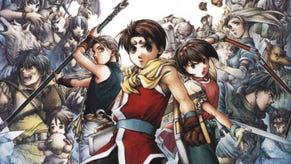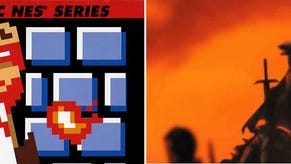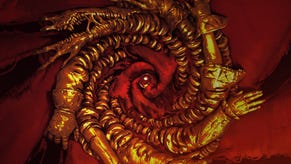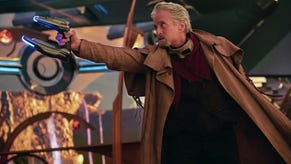The Six Secrets of Suikoden II's Success
Why Konami's freshly reissued RPG classic remains one of the best the genre has ever seen.
This article first appeared on USgamer, a partner publication of VG247. Some content, such as this article, has been migrated to VG247 for posterity after USgamer's closure - but it has not been edited or further vetted by the VG247 team.
After six years of dragging their heels, Konami has finally given the go-ahead for Sony to reissue PlayStation classic Suikoden II on PSN (the original Suikoden hit PSN in December 2008). If you care at all about great RPGs — great games, really — you should buy it.
There's the value proposition, of course. Konami woefully underproduced Suikoden II, and it's been selling for more than $100 complete on eBay for more than a decade. It ranks among the most sought-after and desirable U.S. PlayStation releases; at $10, it'll be one of the more expensive PS1 Classics on PSN, but it's still a bargain compared to what it goes for at auction.
But "rare and expensive" doesn't always equal "excellent." That's what makes Suikoden II so remarkable: It really is worth the asking price. Many pricey collection pieces are the sort of thing you'll buy and stick on your shelf, because underneath that hefty sticker price is a dud of a game. That's not the case for Suikoden II. It was one of the very best RPGs on a system known for its massive library of RPGs, and even now it remains one of the finest console role-playing games ever localized into English. It's easy to be cynical about games that have developed a legendary reputation through age and obscurity, but Suikoden II holds up. And the science behind its excellence can be distilled to these six points.
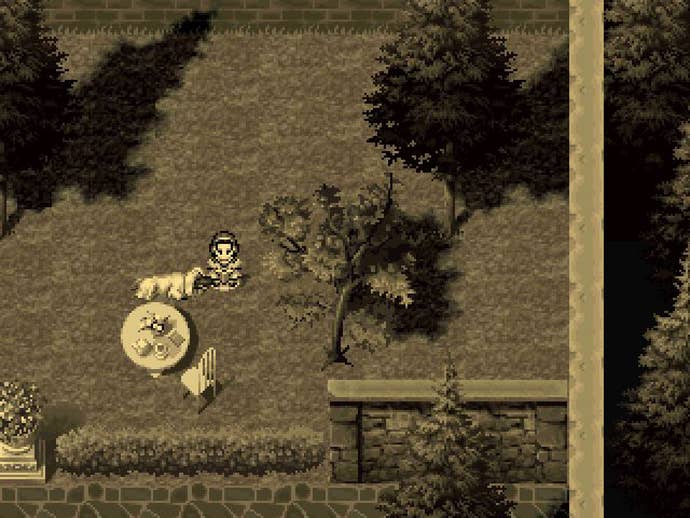
It came pre-aged
Suikoden II's first and greatest problem at its debut was that it had the poor fortune to launch in the U.S. a couple of weeks after Final Fantasy VIII.
Let's frame that in its proper context. Millions of American video game fans didn't even know that role-playing games existed until Final Fantasy VII came along to give them a totally skewed impression of what the genre was about. FFVIII was its proper sequel, pushing the franchise even further away from the munchkin sprites and slow-paced battles for which Japanese RPGs were best known. To say anticipation for the game ran high would be something of an understatement. With its magnificently integrated CG cutscenes and button-mashing turn-based battles, it represented the bleeding edge not just of RPGs, but of console game tech in general.
Suikoden II, on the other hand, looked like a fancied-up Super NES game, just like its predecessor. Aside from the tilted combat plane and some shiny battle effects, it played out with old-school sprites. Critics and gamers at the time mocked its dated tech and muted colors. It lacked crazy light-sourcing effects, failed to push any programming boundaries, and generally felt about five years out of date compared to FFVIII.
But time isn't always kind to the cutting edge, and these days FFVIII looks pretty laughable with its chunky polygons and rough textures. Suikoden II, on the other hand, actually looks less dated than FFVIII. Its humble backgrounds contain a wealth of subtle details and artistry that tended to be lost on tube televisions with bad connections but pop on the clearer, more vivid screens we use for gaming today. The game contains hundreds of characters drawn with just as many unique sprites, some of which run through a remarkable variety of animations for one-time events.
Playing FFVIII these days is like watching a '90s Dreamworks cartoon — it tried so hard, but it looks so awkward now. Meanwhile, Suikoden II is like paging through a gentle storybook: Rich in its seeming simplicity, and bursting with love and sincerity. Now that we've sort of reached "peak graphics," and the cutting edge of game visuals is the playground of a handful of (perhaps unsustainably) well-funded studios, the world has developed a newfound appreciation for the old ways of sprites and bitmaps. Today, Suikoden II looks like the deepest, most beautifully realized indie game you've ever seen.
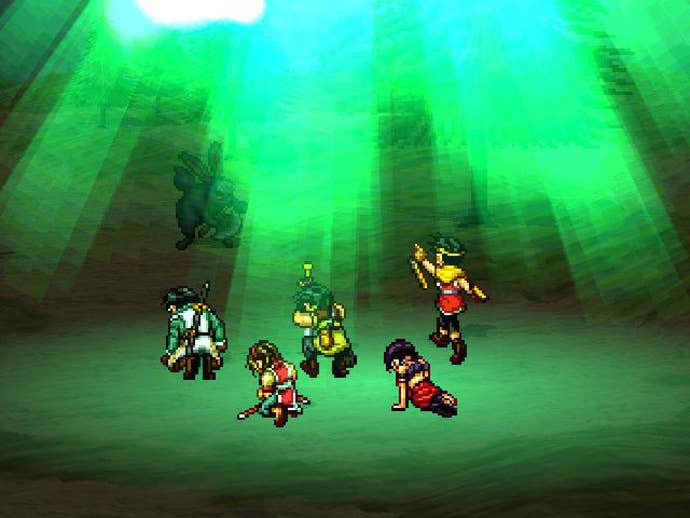
It used its "primitive" tech to tremendous effect
There's another advantage to Suikoden II's so-old-they're-cool-again visuals: They make the game a joy to play. I don't mean to look at (though it's that, too). I mean it's a no-nonsense, fast-paced, instantly satisfying game experience.
Not to beat up on Final Fantasy VIII too much (I actually really love the game!), but look at the toll its visuals took on the PlayStation hardware. It ran at 15 frames per second if it was lucky; and while I'm no fanatic for frame rates, FFVIII seems so choppy today as to be a distraction. Suikoden II, on the other hand, practically exists in a universe outside of frame rate concerns — the important thing is that it doesn't hiccup or stutter, and it doesn't. It's as smooth as it is simple.
More than that, though, it's gentle on the player's time. Observe the combat system. Like FFVIII and most other RPGs of the era, Suikoden II features random battles. Frequent random battles, it should be said. But once combat kicks off, it does something rarely seen in any CD-based RPG: It loads battles instantly. The games visuals were so compact and efficient and undemanding that, aside from a handful of spells effects, it could keep both exploration and combat visuals and data in memory at the same time.
And since it wasn't going for flashy battles (versus FFVIII, which doubled down on the over-the-top summon animations from FFVII and made them the centerpiece of the battle system), Suikoden II was able to further speed through battles by allowing its turn-based rounds to play over with overlapping actions. Your party members, and enemies, will move and attack while other characters' animations are playing out. This isn't just for tag-team actions, either; if you pick nothing but basic attacks, your little warriors will leap simultaneously into the fray to beat on your foes.
The result is that, if you pick Auto-Battle against foes around your current level, you can initiate, act, and complete an entire battle in the time it takes for FFVIII to load its battle system (which it masks with an extended transition effect and a dramatic camera pan before giving you the ability to pick actions). The result is that a complete playthrough of both Suikoden II and FFVIII takes about the same length of time — 40-60 hours, depending on your style — but Suikoden II is able to cram much, much more story and character development into that amount of time.
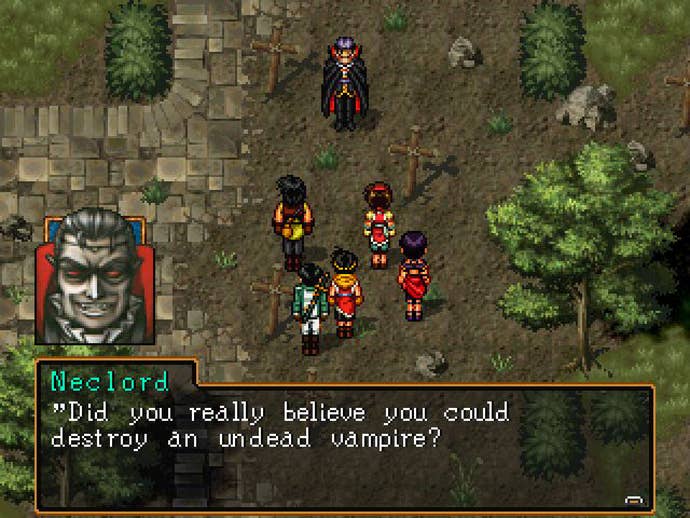
It offered huge rewards for loyal fans
And there were a ton of characters to develop — though some of the heavy lifting had already been done by the original Suikoden. In a nice little touch (borrowed, most likely, from Arc the Lad, which had a similarly lightweight first chapter followed by a similarly massive sequel), Suikoden II allows you to import your completed save file from the original game in order to unlock all sorts of bonuses. In fact, there's an entire (lengthy!) bonus side quest for returning fans, not to mention several familiar faces who will permanently join your team... assuming you kept them alive through the end of the original Suikoden. (Yeah, this series has permanent deaths for some of your unique army/party members.)
Even for those who didn't make it to the end of the original Suikoden, much of the plot is carried by returning characters from the original. Interestingly, though, Suikoden II doesn't play out as a direct sequel to the first game, which told a self-contained story of a ruler's fall from grace and the woeful roots of his power lust. This game takes place in neighboring kingdoms that have nothing much to do with the Toran Republic established in the first game — though occasional outsider references to the events of the original Suikoden allow you to get a sense of the changes you effected in the course of your first adventure. Some of the returning heroes even get a bit of closure throughout the course of this adventure. Suikoden II stands alone as a great story, but it's even better if you do your homework first. It's OK, you can finish the first game in 12-15 hours, no sweat.
(Speaking of the returning cast, there were a lot of bugs in the English localization of Suikoden II, including one affecting Suikoden import data. They probably haven't fixed these problems for the PSN release, so I highly recommend you give the hero of the original Suikoden a name that begins with the letter M. Trust me on this.)
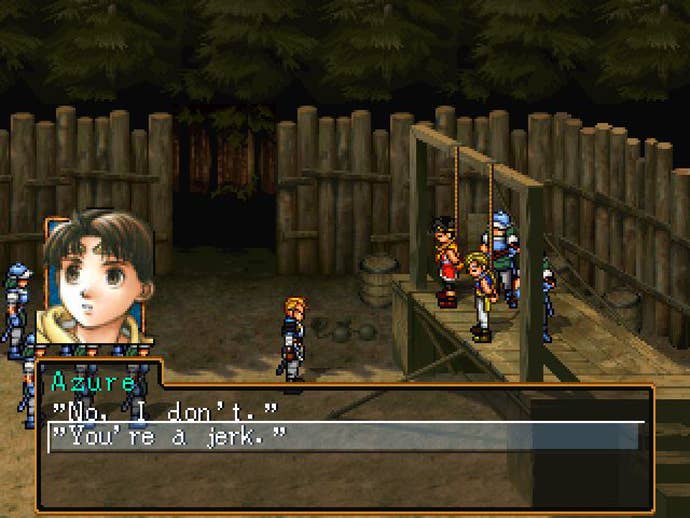
It gave players the freedom to make bad choices, and it showed them the consequences
The original Suikoden became rather infamous for its "Communist choices" — dialogue prompts that seemingly offered the player a chance to make decisions, but ultimately railroaded you into the single correct response. It doesn't matter how much you don't want to drink that obviously drugged tea, Suikoden is going to keep insisting until you finally give in. In the end, these prompts simply allowed you to define some personality for your mute protagonist (most of the "wrong" choices tended to be sarcastic, rude, or lecherous).
At first glance, Suikoden II seems to fall into the same habit. You can make choices, in theory, but in the end everything pushes you toward the same inevitable path. The more you tinker with your choices, though, the more the "wrong" choices allow you to roam freely before giving in to the inexorable hand of destiny.
But every once in a while, the game will surprise you. You'll be allowed to take paths that you'd think would be off-limits to you, to choose actions that seem craven and dishonorable. And if you make those unhappy decisions, the game lets you experience the results. They're rarely good. People suffer and die in the course of Suikoden II's story, but if you make selfish choices, you're stuck living with the knowledge that they've died because of you. The story goes on, but you feel like a little less of a hero.
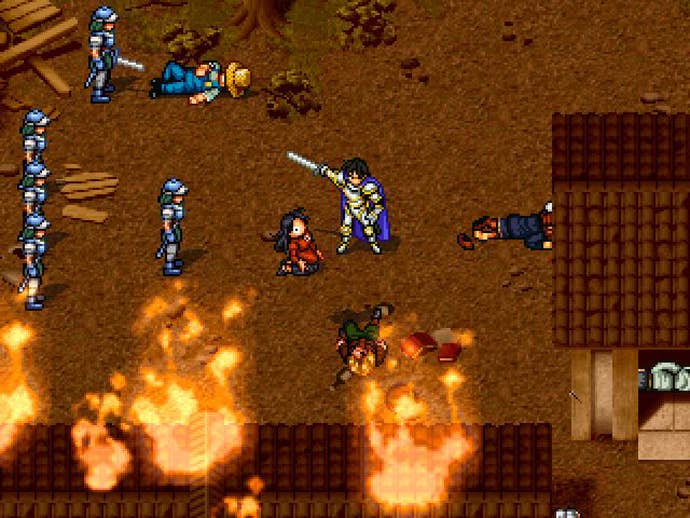
It featured one of gaming's most hateful and memorable villains
No matter what choices you make in Suikoden II, though, you always feel like an absolute good guy compared to the villain of the piece, Luca Blight. He absolutely stands as one of gaming's most vile, evil foes, a man who murders the innocent and views others as subhuman. He's an aggressive, foul, murderous wretch.
The story takes pains to explore the roots of Blight's awfulness, but it never tries to make you feel sympathetic toward him. He's complex, but he's undeniably evil. His magically empowered rampages and genocidal tendencies instead represent the flip side of the Rune Suikoden II's protagonist wields — a demonstration of this primal power's capabilities in the wrong hands.
And Blight's story culminates in one of the most epic RPG battles of all time, a multi-part takedown of the villain, who laughs at the concerted force of an entire army. Within its humble visual framework, Suikoden II manages to present a truly terrifying foe, a man whose sheer rage and hatred resonate with his magical gift to create a threat that's both deadly and unstoppable. It's a single showdown that spans the better part of an hour — and in a game as fast-paced as Suikoden II, that's really saying something.
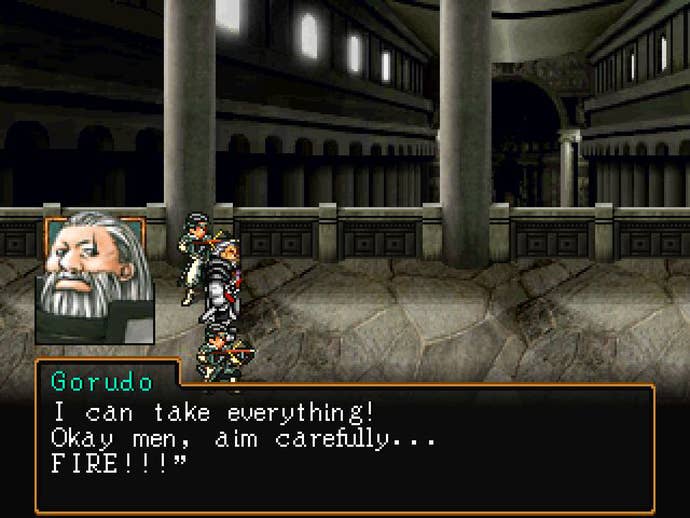
In the end, there are no real bad guys
And yet, not to get too deeply into spoilers, the climactic showdown with Luca Blight isn't the end of the game. While he comes across undeniably as the game's villain, Suikoden has never been about simple good versus evil. It takes a more nuanced world view than that, a choice reflected in the nature of the True Runes that empower its movers and shakers.
While Luca Blight made for an obvious motivating force behind the enemy army, he was ultimately a single murderous superman within a powerful nation. He did not create the central conflict that drives the game, he merely provided the spark that ignited it into war. And that conflict continues to rage even after he's gone.
The nature of the plot in the later chapters of the game hits far closer to home than you might expect at first, and the story becomes deeply personal to Suikoden II's nameless hero. The machinery of war is set into motion in the earliest moments of the story, and the task of seeing it through to its end requires both political and combat maneuverings, as well as terrible sacrifices. In the end, though, the real message of Suikoden II is that war rarely has a wrong and a right side, just different perspectives and legacies of resentment.
In other words, you really ought to play it. Good thing it's finally going to be available for a reasonable price, eh?
Images courtesy of LP Archive

